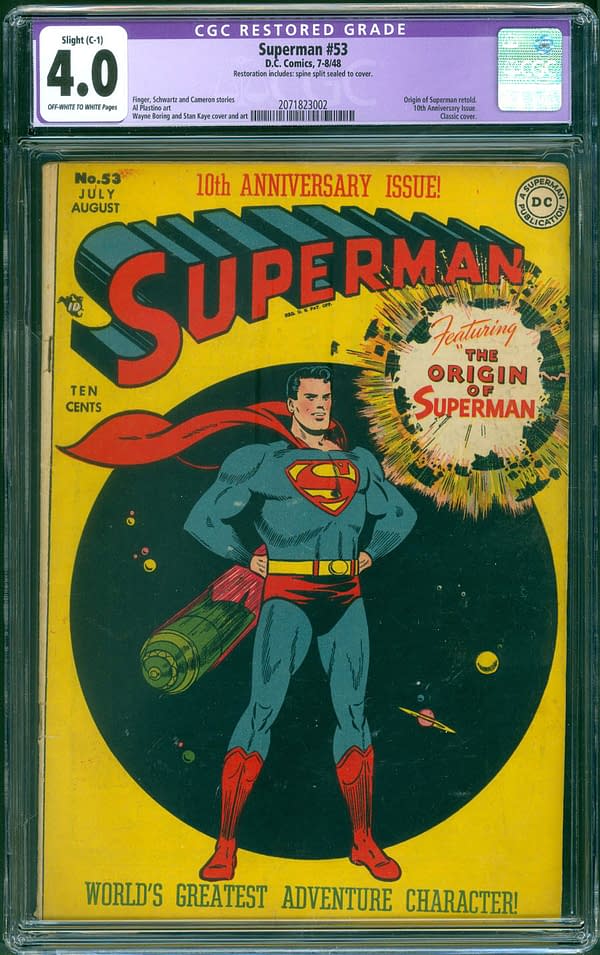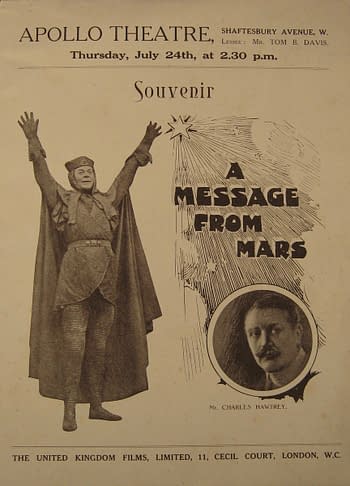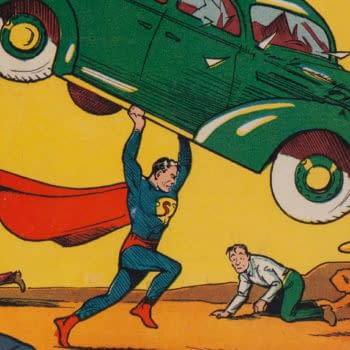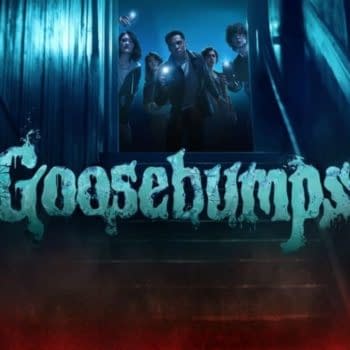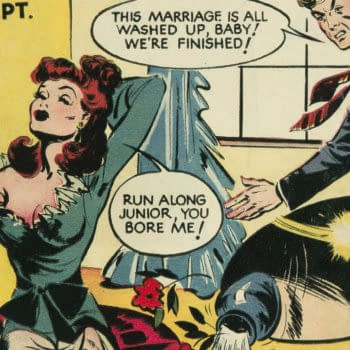Posted in: Comic Connect Sponsored, Comics, Vintage Paper | Tagged: jerry siegel, joe shuster, superman
The First Strange Visitor from Another Planet
A man becomes ostracized by the scientifically-advanced, cape-wearing, chest-symbol-wearing leadership of his planet. Sent to Earth, the man is known as "The Messenger" and nobody likes his message, as it includes scenes of destruction and dire warnings about the future of civilization. Newspapers also call the Messenger a "Strange Visitor from Another Planet". Am I talking about Superman? Kind of, but I'm also talking about the 1899 play A Message from Mars, which became the first science fiction film in the UK in 1913.

There's a copy of Superman #53 closing at auction today, May 22, in Session 5 of Comic Connect's Event Auction 42. It's Superman's origin retold and greatly expanded, including an early appearance of Jor-El along with a greatly fleshed-out version of the Kryptonian backstory. The story in this issue has been credited to Bill Finger and Wayne Boring. Jor-El had first appeared prior to this in 1947 in the Superman Sunday newspaper strip during a sequence that had also featured a retelling of the origin story. This part of the Superman backstory bears some similarities to certain elements from A Message from Mars.
While the term "Strange Visitor from another planet" and other of those elements seem to have first coalesced around A Message from Mars, The Messenger was not the first Strange Visitor to capture this world's imagination. I wasn't quite sure what I'd find when I started researching this issue on a recent whim, but what I discovered turned out to be a little bit of historical magic. It's nothing less than a bright, blazing example of our fascination with phenomena that caused us to look, up in the sky — leading to a cultural interest in both science and science fiction in turn.
Look, Up in the Sky
The term "Strange Visitor" as applied to objects from outer space seems to have gained currency in the early 1860s, as astronomy news about comets and meteors seems to have increasingly captured the public's imagination. This combined with the speed of news due to advances in both printing and distribution reaching its own critical velocity around the globe. The decade of the 1860s would see the transcontinental railroad being built and completed, along with "submarine telegraph" lines across the Atlantic and Pacific oceans. The country and the world became connected up during that decade, vastly increasing the spread of information around the world and the appetite for that information.
For example, on May 18, 1861, the Cecil Whig newspaper of Elkton, Maryland discussed the expected reappearance of Thatcher's Comet. "This last strange visitor appeared in 1266 and in 1556 and is supposed to return in every three hundred years. But on account of the inaccuracy of the observations of Fabricius, the astronomer of Charles the Fifth, M. Bomme, by immense calculation, discovered an error of two years, more or less so that this long-expected comet should appear in 1861."
In June 1895 as reported by the Spokesman-Review of Spokane, Washington, "Waters bubbled and seethed for ten hours from the heat of the Strange Visitor" after a "five thousand pound meteor" fell in a lagoon near a Tacoma farming community. The San Francisco Examiner made note that a "Strange visitor leaves a waving track of fire like sparks from a rocket" in regards to a meteor that struck behind Dibblee's Hill near the waterfront. There are countless such reports in U.S. newspapers after 1860.
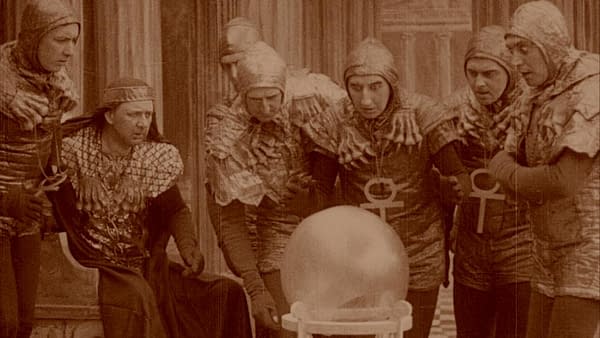
The Civilization on Mars
This interest in Strange Visitors was leveled up in the mid-1890s by astronomer Percival Lowell, who is the man singly most responsible for popularizing the notion of a civilization on Mars under the theory that the so-called canals of Mars were built by intelligent life, rather than being a naturally-occurring optical illusion. As a result of Lowell's promotion of the theory, interest in Mars exploded — as did fiction based around the notion of intelligent life on Mars. H.G. Wells's War of the Worlds, first serialized in 1897, is the most famous early fictional result of Mars mania. Edgar Rice Burroughs's A Princess of Mars, first serialized in 1912, is another prominent example.

The Strange Visitor
The 1899 play A Message from Mars by Richard Ganthony is another example of the world's fictional obsession with Mars which is far less known than War of the Worlds or A Princess of Mars, but is just as important as those examples. The framework of the concept of Ganthony's Messenger tracks in a general way with Jerry Siegel and Joe Shuster's Kryptonian origin for Superman. Like Superman's father Jor-El, the Messenger became an outcast among the scientifically-advanced, cape-wearing, chest-symbol-wearing leadership of his planet. Also like Jor-El, the Messenger has a message about the future of civilization that nobody wants to hear. Noting that he was cast out to Earth because no one in his own advanced civilization listened to his message either, the Messenger elaborates:
Triflers of Time, learn the cause. Self–Self is the Miasm of the world you live in; a soul plague botching Earth's body over with its petty sites, outraged homes, labor riots, revolutions, civil wars, carnivals of blood
In what hideous Pretence you live. There, before you, stood a man of genius. You drove him out to die. An Inventor perishing in the hey-day of Invention Worship. You a man of science! You know nothing at all. There is more in his little finger than your whole body.
And later:
Poor thing of Temperature! Your scientists still leave you slaves of the weather. What braggart are you to dream as yet of civilization! When you can weave water into clothing, spin fire into ribbons, and wear them in the altitudes, you shall speak of some advancement.
The Mars mania of the turn of the last century seems to have been the push that was needed to transform "Strange Visitor" into "Strange Visitor from Another Planet". When Ganthony's play enjoyed a successful run in America in 1915, the Washington Post noted, for example, that "More than half of the play represents the bachelor's remarkable experience with a strange visitor from another planet, the Messenger from Mars, who takes him on a tour of London and shows him the suffering in the city."
- 1915-era Newspaper advertisement for a US production of the play version of A Message from Mars.
- Handbill for the 1913 UK film version of A Message from Mars.
Elements of A Message from Mars also track with Siegel and Shuster's The Reign of the Superman story in their fanzine Science Fiction: The Advanced Guard of Future Civilization. Particularly, the human inventor in A Message from Mars encounters a beggar, and their interaction leads to the inventor's contact with the Messenger. In the Reign of the Superman, a scientist finds a beggar to use in an experiment — which leads the beggar to become a villainous telepath. Ganthony's Messenger displays a wide array of powers including telepathy.
Siegel and Shuster were avid science fiction fans as were most of the other foundational golden age comic book creators, and it seems possible if not likely that they'd at least heard of A Message from Mars due to its eventual status as the UK's first science fiction film. The similarities here between its plot elements and the Kryptonian origin of Superman suggest that the science fiction and social elements put forth in A Message from Mars were some influence on Siegel and Shuster in their creation of Superman's origin story — at least indirectly.
While we can't say for certain that Siegel and Shuster (or Bill Finger, for that matter) ever saw A Message from Mars, we can all watch it now, available on Youtube. And someone should grab that copy of Superman #53 closing at auction today, May 22, in Session 5 of Comic Connect's Event Auction 42. I've got a nice copy myself, and it's one of my favorite things in my collection.



